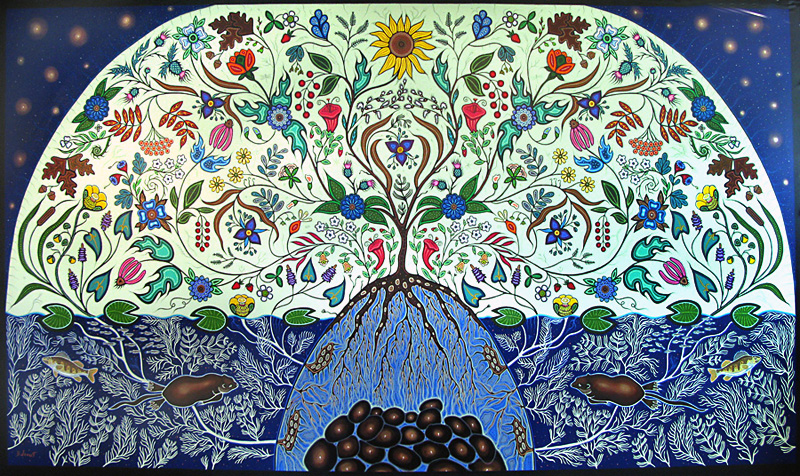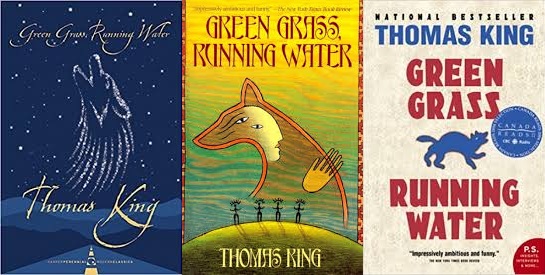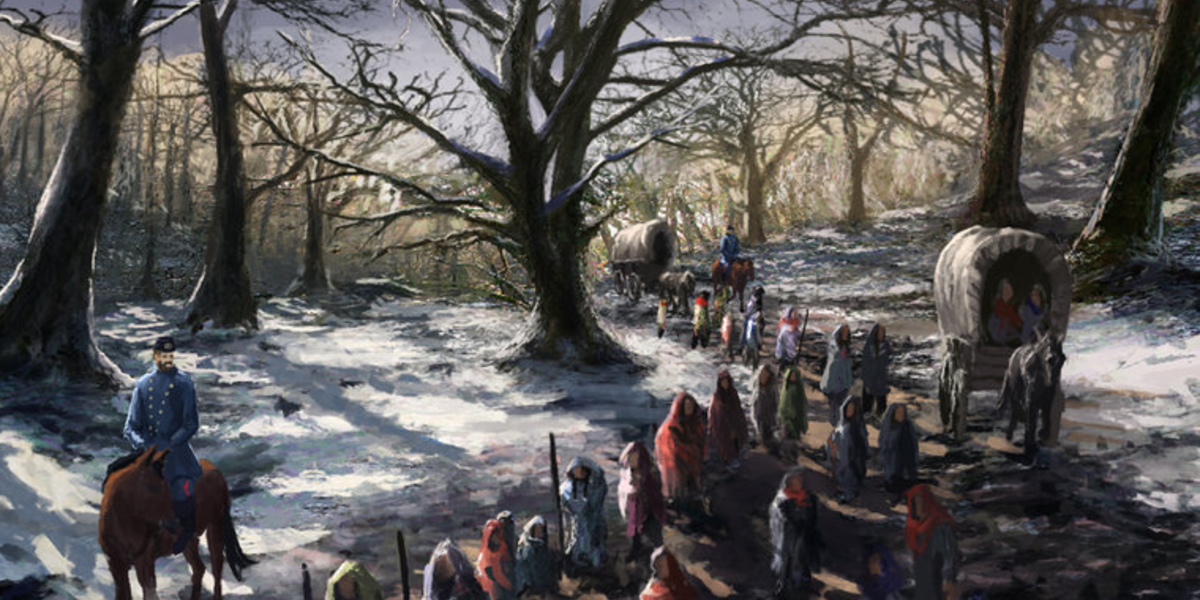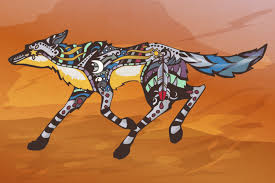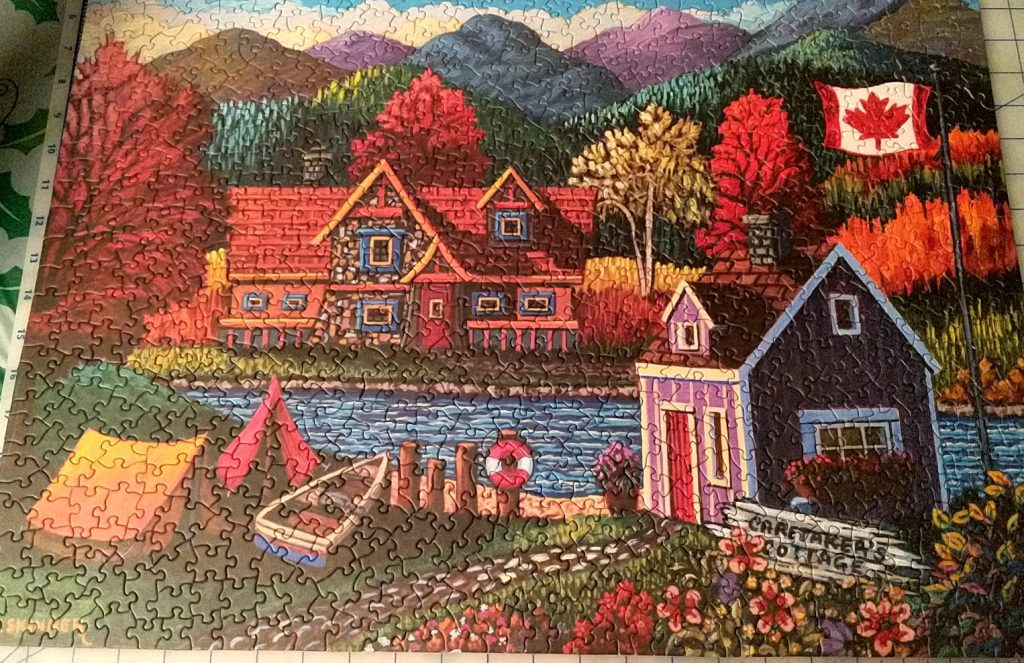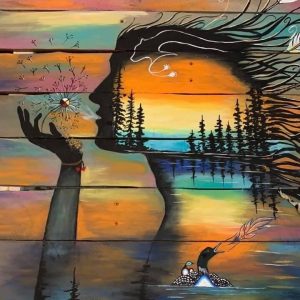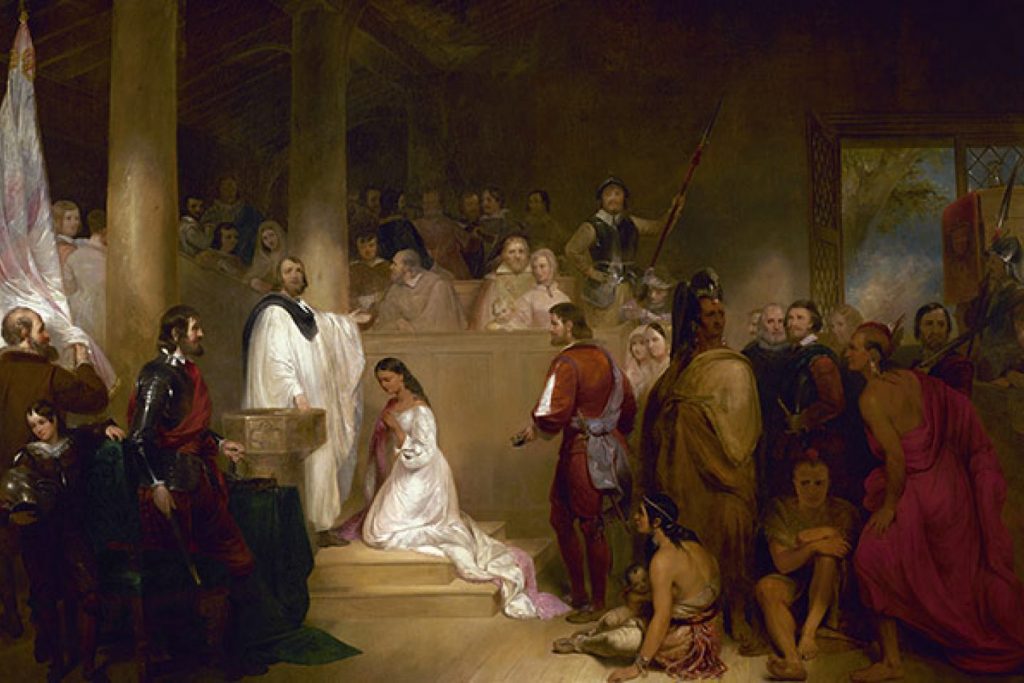I decided to work on pages 98 to 109 for this assignment as it covered a lot of characters and events that I was interested in knowing more about. For some of these I begin by referencing what Jane Flick noted in her “Reading Notes for Thomas King’s Green Grass, Running Water” before bringing in other sources. Some allusions, such as Dr. Joe Hovaugh, have been talked a lot about in both the teacher’s blogs as well as articles we have read for class, and therefore I chose to not go into too much detail if I did mention them.
Babo [Jones] (pp 98): Flick mentions that Babo is a character in the story “Benito Cereno” in the novel Piazza Tales (1856) by Herman Melville. Melville’s Babo, like Babo’s grandfather in GGRW, is a barber on board the ship San Dominick in the novel. More interestingly, Babo is the leader of a slave revolt on the ship. Flick points out that King makes small references to the connection of the two Babo’s through small nods, or jokes, about ships and sailing such as GGRW’s Babo carrying life savers (145).
Jimmy Delano (pp 98): Delano may be another connection to Captain Delano in “Benito Cereno”; this seems plausible as Babo and Delano have a conversation on pages 98 to 101 during which Babo is takes over the conversation, much like how the slave Babo takes over the ship San Dominick. Another reference that Flick mentions is that of Columbus Delano, which Flick believes to be the more likely case of whom King was referencing. Columbus Delano (1809 – 1896) was an American politician who was active during the anti-slavery movement. Despite being an advocate for anti-slavery, Delano helped push for President Ulysses S. Grant’s “peace policy,” which advocated for the extermination of buffalo in order to force Native Americans onto reservations be depriving them of their main food source. President Grant wanted to place Native Americans under the tutelage of Christian missionaries who would teach them basic American ideals such “how to farm, read and write, wear Euro-American clothing, and embrace Christianity” (“Peace Policy”).
Story of the First Woman (with many mistakes) (pp 98 – 101): Babo attempts to retell the story of First Woman, a Native American myth, that was told to her by the four Native Goddesses in GGRW. Thomas King tells this story in the chapter “‘You’ll Never Believe What Happened’ is Always a Great Way to Start” in his novel The Truth about Stories: A Native Narrative; it can also be found in his Massey Lecture on the same novel. This story is probably familiar to most in the class as it was one we read, listened to, and discussed back in Unit 1.
Sergeant [Ben] Cereno (pp 101): Yet another reference to Melville’s “Benito Cereno,” this one perhaps more obvious than that of Babo and Delano.
Eighteen seventy-six (pp 104): Possibly in reference to Black Hills War (also known as Battle of the Little Bighorn and Custer’s Last Stand) that took place in 1876 in Montana Territory. This battle was between Lieutenant Colonel George A. Custer and a mixture of Lakota and Northern Cheyenne peoples led by Sitting Bull. Stated as being “typical” disagreements between Indigenous people and Americans who were fighting over land rights that included areas deemed to be ripe with gold. Those indigenous to the area were eventually classified as “hostile” when they refused to relinquish or sell the right to land that they considered sacred. Severely underestimating the number of Lakota and Cheyenne warriors, Custer attacked with a force of 210 after multiple companies had converged on the territory in question in order to rectify the situation by force. All 210 soldiers, including Custer himself, perished. While it showed the strength and power of those Native Americans who fought, it proved detrimental as U.S. Forces showed up in greater numbers in order to repress and destroy the victors.
January of 1891 (pp 104): In reference to the arrival of the four Indian Goddesses who throughout the story all eventual end up at Fort Marion together. Their timely arrival suggests that they were at the Massacre at Wounded Knee Creek.
Wounded Knee (pp 105): Called the Wounded Knee Massacre, it was the slaughter of 150 to 300 Lakota Indians on December 29, 1890. It was the result of rising tensions between the United States and the Lakota Indians as the former tried to force the latter onto reservations and to become assimilated into American culture. It was again a site of conflict in February 1973 when the American Indian Movement (AIM) occupied the area of Wounded Knee Creek in order to protest civil rights violations on Native Americans. For seventy-one days, AIM held their ground while being surrounded by U.S. Troops. The occupation ended with two deaths and hundreds of arrests; however, the activists left feeling they had achieved what they had set out to do, and that is draw attention to the infringement on American Indian rights.
First Woman (pp 106): Reference to the Native American myth about the creation of earth; the very same one that mentioned earlier that Thomas King wrote down in his novel The Truth about Stories.
Fort Lauderdale (pp 107): Reference to a popular vacation spot in Florida, United States. Coyote gets this Fort mixed up with Fort Marion – where Native Americans were sent after the Red River wars in Oklahoma and Texas in 1875. Fort Marion is mentioned earlier in the book by Alberta Frank who teachers a class on those who were imprisoned there that became famous for their drawings depicting Native American life.
King chose the following names as these characters are famous for having companions who are considered “savage” – generally speaking Natives or other coloured people – to the “powerful” white man.
Lone Ranger (pp 108): From the famous Lone Ranger radio serial from the 1930s, a television series from the 1950s, and multiple movie adaptations from the late 90s.
Ishmael (pp 108): Character from Herman Melville’s Moby Dick notable famous for the line “Call me Ishmael.”
Robinson Crusoe (pp 108): British citizen from Defoe’s Robinson Crusoe (1719) who gets ship wrecked on a remote island occasionally occupied by cannibals native to the area.
Hawkeye (pp 108): Character from James Fenimore Cooper’s The Leatherstocking Tales depicting 18th-century life among Indians and white pioneers. In this novel the character, Natty Bumppo, takes on various names, one of them being the “Indian-esque” name of Hawkeye.
Tonto (pp 108): Indian companion to the Lone Ranger. Interesting enough, the “name means “numbskull,” “fool,” or “stupid” in Spanish” (Flick 141). Fittingly enough, the name Tonto is given to Ahdamn, who is kind of an idiot in GGRW.

We’ve nearly made it! Thank you to everyone who commented on my blog and added to the discussion. I look forward to seeing what everyone worked on at our online conference.
Works Cited
“1868: President Grant advances ‘Peace Policy’ with tribes.” Nation Library of Medicine, https://www.nlm.nih.gov/nativevoices/timeline/342.html#:~:text=Policy%E2%80%9D%20with%20tribes-,1868%3A%20President%20Grant%20advances%20%E2%80%9CPeace%20Policy%E2%80%9D%20with%20tribes,whom%20he%20deems%20morally%20superior. Accessed March 25, 2021.
“Visit Lauderdale: Everyone Under the Sun.” Sunny.org, 2021, https://www.sunny.org/. Accessed March 25, 2021.
Admin. “The Fort Marion Prisoners.” Native American Roots, February 24, 2012. http://nativeamericannetroots.net/diary/1269. Accessed March 25, 2021.
Defore, Daniel. The Life and Adventures of Robinson Crusoe. Project Gutenberg, 1996, http://www.gutenberg.org/files/521/521-h/521-h.htm. Accessed March 25, 2021.
Editors of Encyclopaedia Britannica, The. “American Indian Movement.” Britannica, 1998, https://www.britannica.com/topic/American-Indian-Movement. Accessed March 25, 2021.
Editors of Encyclopaedia Britannica, The. “Lone Ranger.” Britannica, 2015, https://www.britannica.com/topic/Lone-Ranger. Accessed March 25, 2021.
Editors of Encyclopaedia Britannica, The. “Sitting Bull.” Britannica, 2021, https://www.britannica.com/biography/Sitting-Bull. Accessed March 25, 2021.
Editors of Encyclopaedia Britannica, The. “The Leatherstocking Tales.” Britannica, 2018, https://www.britannica.com/topic/The-Leatherstocking-Tales. Accessed March 25, 2021.
Field, Phyllis F. “Delano, Columbus.” American National Biography, 2000, https://www-anb-org.ezproxy.library.ubc.ca/view/10.1093/anb/9780198606697.001.0001/anb-9780198606697-e-0400308;jsessionid=695FE46BC2A233630672C4071C10530E. Accessed March 25, 2021.
Hudson, Myles. “Wounded Knee Massacre.” Britannica, 2019, https://www.britannica.com/event/Wounded-Knee-Massacre. Accessed March 25, 2021.
King, Thomas. “The 2003 CBC Massey Lectures, ‘The Truth about Stories: A Native Narrative’.” CBC, 2003, https://www.cbc.ca/ideas/massey-archives/2003/11/07/massey-lectures-2003-the-truth-about-stories-a-native-narrative/. Accessed March 25, 2021.
King, Thomas. “The Truth About Stories: A Native Narrative.” House of Anansi Press, 2003 https://web-b-ebscohost-com.ezproxy.library.ubc.ca/ehost/detail/detail?vid=0&sid=2bbf63f0-5b7f-475a-b101-c0d11991125e%40pdc-v-sessmgr03&bdata=JnNpdGU9ZWhvc3QtbGl2ZSZzY29wZT1zaXRl#AN=488915&db=nlebk. Accessed March 25, 2021.
Melville, Herman. Moby-Dick; or, THE WHALE. Project Gutenberg, 2001, https://www.gutenberg.org/files/2701/2701-h/2701-h.htm. Accessed March 25, 2021.
Melville, Herman. Piazza Tales. Dix & Edwards, 1856, https://babel.hathitrust.org/cgi/pt?id=uc2.ark:/13960/t5n873g00&view=1up&seq=10 . Accessed March 25, 2021.
Urwin, Gregory J.W. “Battle of the Little Bighorn.” Britannica, 2020, https://www.britannica.com/topic/Black-Hills-War. Accessed March 25, 2021.
Urwin, Gregory J.W. “George Armstrong Custer.” Britannica, 2021, https://www.britannica.com/biography/George-Armstrong-Custer. Accessed March 25, 2021.
